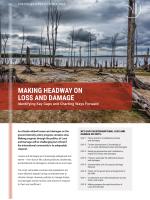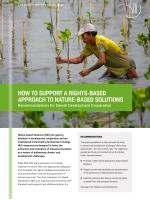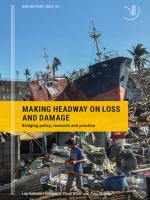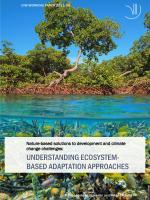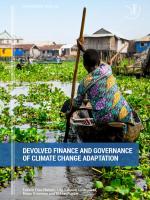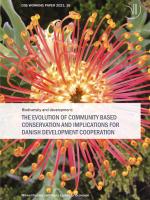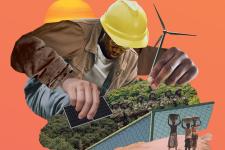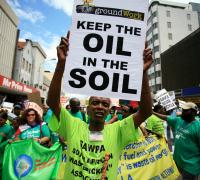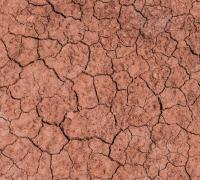Grounding COP27

When you think of the global climate negotiations, land rights are probably not the first thing that comes to mind. And let’s be honest: Land rights aren’t the sexiest thing on the planet. They rarely feature in news headlines about the latest flood or drought, and they don’t have that wow-factor of all the new “climate-smart” technologies.
Yet land rights – and struggles over them - have been pivotal to human society throughout history, and they are critical if we are to achieve successful and equitable climate action in the Global South. Land rights are rarely high on the official agendas of the climate negotiations, but they can make or break the practical implementation of a number of the plans and mechanisms decided at the UN COP negotiations. This including several new initiatives that emerged at the recent COP 27 climate change conference.
Land rights and the Loss & Damage agenda
A main outcome of COP27 was the establishment of a new Loss & Damage fund to help compensate vulnerable countries for economic and non-economic losses and damages caused by climate change. In principle, this funding should ultimately end up helping the people whose livelihoods are severely impacted or made impossible by climate change, through various forms of compensation or insurance schemes.
Land-related losses and damages as a result of climate change are common across the Global South. Examples include this year’s extreme floods in Pakistan and Nigeria which covered major parts of both countries and displaced millions, and the current drought in the Horn of Africa which is the worst in decades. In such disasters, farmland, grazing areas and housing plots are degraded or simply washed away as a result of intensified floods, droughts or cyclones. At the same time, more gradual changes such as new rainfall patterns, temperature change and sea level rise are undermining the basis for agricultural production and human habitation in entire regions across the Global South.
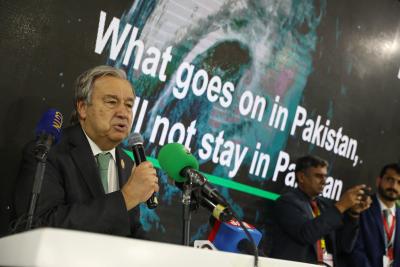
It may however prove difficult for many of the world’s inhabitants to document these losses and damages. In order to claim that your land has been degraded and your crops and homes have been lost to floods, you’ll likely have to prove that you had rights over this land in the first place. This will be a problem for the many communities in the Global south who do not have formal state-sanctioned rights to their land but rely on customary land rights or locally negotiated access rights that are not sanctioned by the state.
This includes millions of farmers worldwide, as well as mobile groups such as pastoralists who may move livestock across large distances in search of grazing. It is an even bigger problem for those who do not have any land rights at all - including people who are too poor to own land and instead work on other people’s farms, or those who live in unrecognized informal urban settlements.
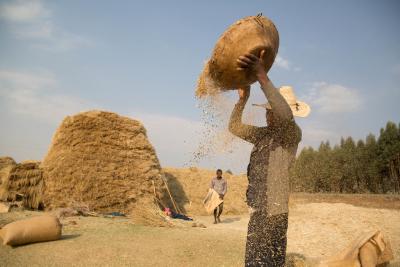
Documenting losses and damages related to land may also be difficult in situations of displacement, where people have left their original homes and land because of floods, droughts, or long-term degradation caused by climate change. The situation may be particularly problematic for women, as land in small-holder farming is often owned by male household members.
Loss & Damage compensation- and insurance mechanisms must pay close attention to such issues if they are to succeed and be just and equitable. This includes finding ways to recognize different types of rights, customary, collective and locally negotiated rights – and working to strengthen the rights of those who are at a disadvantage vis-à-vis land rights, or whose land rights are insecure for other reasons.
Experiences from past and ongoing efforts to strengthen the land rights of women, indigenous peoples and other groups – such as the programmes and initiatives under the International Land Coalition - will be important to bring into the Loss & Damage implementation work. Finding means to channel Loss & Damage financing to those who are not likely to gain land rights but whose livelihoods are still affected by land related climate hazards – such as farm workers - will also be important.
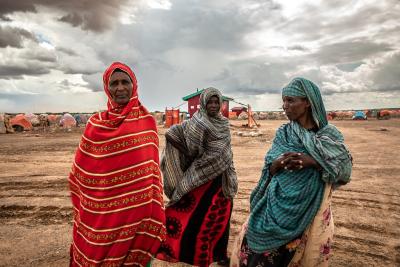
Land rights and climate change adaptation
COP27 also saw the launch of new initiatives on climate change adaptation, i.e. the adjustments we make in society to become more resilient towards the impacts of climate change and finds ways to live with the new conditions.
Here again, attention to land rights will be critical for successful implementation. This includes the Sharm El Sheik Adaptation Agenda, presented by the COP Presidency as the first global plan for adaptation that brings together state and non-state actors. The plan does not mention land rights, and yet they are a significant factor in a number of the key areas that the initiative aims to address - including agriculture, water and ecosystems, irrigation, coastal protection, infrastructure development, and insurance schemes.
For example, the Sharm El Sheik Agenda aims to increase farmer’s yields without expanding the agricultural frontier. This brings into play the complex connections between secure land rights and small-holder farmers’ ability to enhance their yield. Here it will be important to avoid universalizing assumptions and instead engage farmers themselves in order to understand their own preferences and rationales as to what kinds of land rights helps them enhance farming outputs.
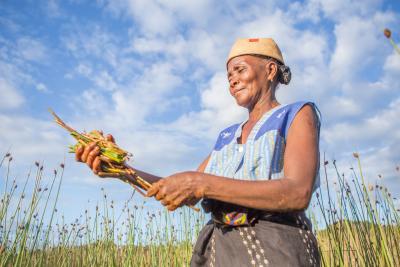
The Sharm El Sheik Agenda also plans to make substantial use of so-called Nature-based Solutions in both rural and urban settings. This includes “protection of 45 million hectares (lands and inland waters), 2 billion hectares sustainable management and 350 million hectares restoration of land securing legal indigenous and local communities with use of nature-based solutions to improve water security and livelihoods.” [our underscore]. It is a positive feature of the Agenda that it pays attention to indigenous peoples’ and local communities’ livelihoods. As decades of experience in conservation has shown: if such initiatives do not at the same time secure indigenous peoples and communities’ rights to land and other natural resources, they will fail.
In addition to global and nationally driven adaptation initiatives, it is also essential to be aware that autonomous adaptation is already ongoing among most communities. This, too, raises important questions about land rights. As we are finding in the joint Rights and Resilience (RARE) research program in Kenya (https://rare-net.org/), the land access needs of rural households may change as they adapt to climate change. In some areas, pastoralist households increasingly engage in crop framing as part of their adaptation strategies, and with that comes a need to secure small plots of land with adequate soils and water. Other pastoral households focus more on intensified livestock production, and/or growing their own feed and rely on private land rights that can sustain this. Yet others move their livestock further afield or to new areas, relying on access through communal rangelands or – if they are well-off – leasing or buying private grazing land in other parts of the country.
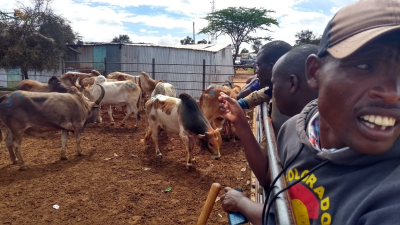
Efforts that aim to support adaptation – such as the Sharm El Sheik Adaptation Agenda - must therefore pay more attention to the connections between adaptation and different land rights and how adaptation can be supported under different tenure arrangements. This includes options for flexible cross-tenure arrangements (e.g., communal/individual) and developing conflict resolution mechanisms to deal with the conflicts that may arise from the adaptation strategies of different stakeholders as their land access interest collide. There is also need for attention to land rights when developing the methods and metrics for monitoring adaptation progress under the Global Goal for Adaptation (GGA).
Land rights and climate change mitigation
While the importance of land rights is often overlooked in adaptation and loss & damage agendas, the issue has been a more explicit bone of contention in the context of climate change mitigation efforts, i.e. the actions that aim to reduce our emissions in order to halt further climate change. One example is large-scale renewable energy schemes, such as wind- and solar farms, which has sometimes lacked attention to – or even overruled – local land rights. This has led to conflict with local communities, and in some cases delayed or even entirely stopped such projects.
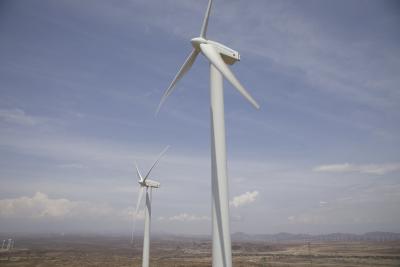
Contestations over land rights have however been particularly contentious in relation to forest and climate initiatives such as the REDD+ mechanism, which aim to store and capture carbon dioxide through forest conservation. In the climate negotiations and elsewhere, indigenous peoples and local communities supported by civil society organizations have long voiced concerns that such schemes will disenfranchise them from their territorial and customary land rights.
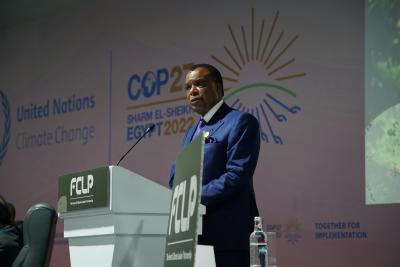
Despite the controversies and a recent period of stagnation at the climate negotiations, the forest and climate agenda made some headway at COP27. Forests were mentioned in the final negotiation text for the first time, and a new 26-country Forest and Climate Leaders’ Partnership was formed. African, Asian and Latin American countries in the Coalition for Rainforest Nations furthermore negotiated – with some success – to expand the opportunities for private sector financing and trading in the REDD+ finance mechanism.
In recent years, the original emphasis on forest and climate initiatives has furthermore expanded to also include carbon storage in wetlands, rangelands and other ecosystems, and the scope has grown from only protecting existing ecosystems to also restoring and expanding them. Land restoration among smallholder farmers has also entered the agenda. For example, at COP27, the Arab Bank for Economic Development in Africa, the Bezos Earth Fund, and a Pan-African investment company, thus, launched a 2-billion-dollar blended finance mechanism to support land restoration among small-holder farmers.
According to the Land Gap report (https://www.landgap.org/) released just before COP27, the combined reliance on land for carbon removals in country pledges under the UNFCCC amounts to 1.2 billion hectares of land globally, which is roughly equal to the extent of current global crop land. Approximately 633 million hectares of this involves a change of existing land uses to forest.
The sheer amount of land on which such climate change mitigation efforts will take place is thus very substantial. Many of these efforts do in principle aim to engage and benefit communities and indigenous peoples alongside the broader climate change mitigation benefits, but the issue remains contentious and there are concerns that these initiatives will drive up land values and impose too many restrictions on the rights of communities to access and manage their land and ecosystems.
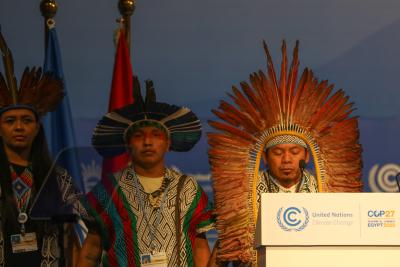
Attention to the issue of land rights is thus pivotal also in mitigation measures, and especially those that involve external measures to protect and restore natural ecosystems in order to store carbon and avoid emissions. Relevant principles and standards are developing that can help guide such measures - e.g., the IUCN Global Standards for Nature Based Solutions and the recent Land Rights Standard facilitated by the Right & Resources initiative. While these frameworks constitute important steps forward, they are not recognized by all stakeholders and can be circumvented in practice. Ensuring their effective implementation in climate measures is therefore critical, as is working from the ground up and incorporating the particularities of local and national land rights in interventions.
Land rights issues thus underpin a number of the key agendas in climate action in the Global South, ranging from compensation for loss and damage over adaptation to mitigation. They are critical for successful implementation of many major initiatives – including those emerging at COP 27 – and they are important for a just transition in the Global South. Yet land rights are often forgotten or not articulated in debates and initiatives about these agendas. Land rights, in all their different shapes and forms, should therefore be high on the agenda in future climate negotiations.
***
This comment was produced as part of the collaboration between the Rights & Resilience (RARE) research programme and the Africa Research & Impact Network (ARIN)
Authors: Mikkel Funder, Danish Institute for International Studies; Joanes Atela, Africa Research & Impact Network; Iben Nathan, University of Copenhagen; Alphonce Mollo, University of Nairobi/ University of Copenhagen; Charles Tonui, Africa Research & Impact Network; Leah Aoko, Africa Research & Impact Network.
- RARE investigates relationships between resilience and land rights in Kenya, with funding from the Danish Consultative Committee for Development Research. Read more about RARE here: https://rare-net.org/.
- ARIN brings together a network of scholars across Africa working on sustainable development and related issues. Read more about ARIN here: https://www.arin-africa.org/.
DIIS Experts


